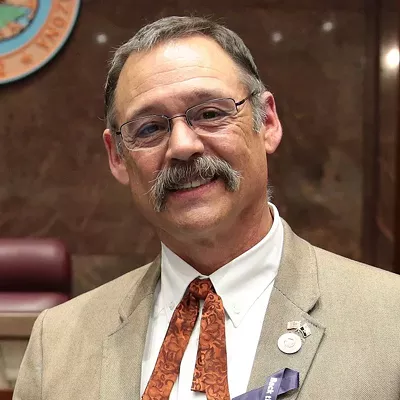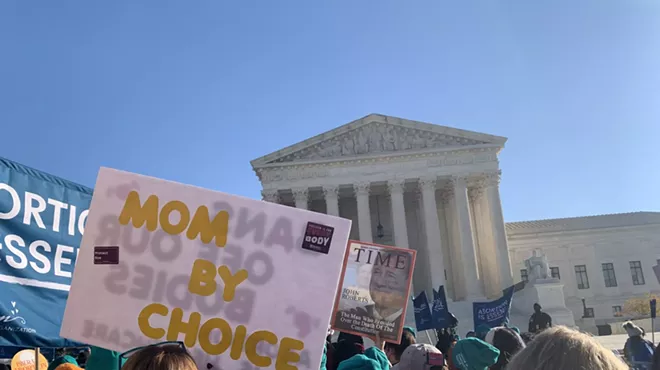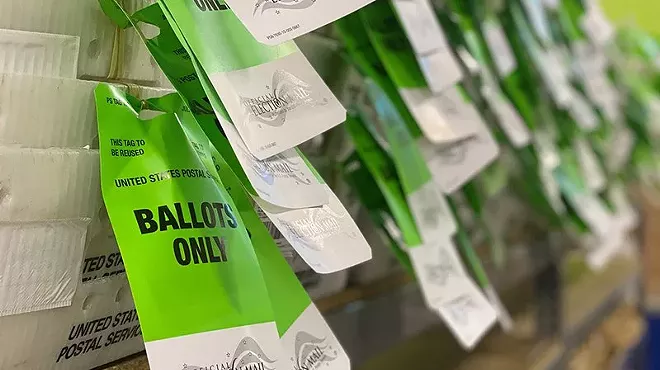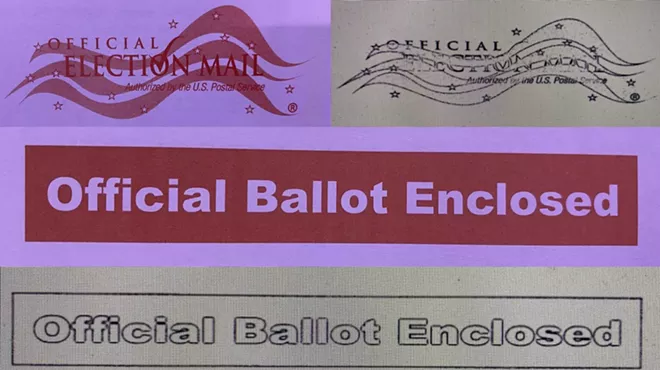Wednesday, December 21, 2011
We've Got (Tentative) Political Districts!
The Arizona Independent Redistricting Commission wrapped up their work late Tuesday night with congressional and legislative districts (tentatively) decided, and the chairwoman on the verge of tears.
But the commission’s independent chairwoman, Colleen Mathis, wasn’t holding back tears of frustration or anger after casting her final vote of the night (which might be expected, judging by how the state's electeds have treated and trashed her). She was fighting off tears of joy and gratitude while praising her colleagues and the few hardcore members of the public still hanging around the Tempe hotel conference room at 10 p.m.
The commission approved the congressional maps on a 3-2 vote, with the chairwoman joining the two Democrats to approve a political landscape of four safe Republican districts, two solid Democratic districts, and three districts that were deemed competitive, including the new ninth district that the state picked up due to population growth.
The legislative district map also passed 3-2, but earned bipartisan support when Republican commissioner Richard Stertz joined Democratic commissioner Linda McNulty and chairwoman Mathis in support.
We’ll post some geeky statistics and map stuff for you to play with in the next few days, and we’ll give you more info in the print edition when space permits, but the basic takeaway points are that the current congressional districts 7 and 8 more or less retained their shapes and boundaries in the Tucson area. Congressman Raul Grijalva’s district is now called CD3, while Congresswoman Gabrielle Giffords’ district, now called CD2, is now more or less evenly split between Republicans and Democrats, with independent voters making up the deciding force in future elections.
Much of the line-drawing debate in the past few days has dealt with the far southeast edge of the state, including Cochise County, which, in earlier drafts of the congressional maps, was parts of the new Congressional District 1, a large district that stretched from the U.S.-Mexico border all the way up past Flagstaff. But the commissioners decide to re-draw Cochise County into the new CD 2, an area that's now represented by Giffords.
Another Southern Arizona point of contention has been the Marana, Oro Valley, Saddlebrooke area, which the commission cut out of the other Pima County congressional districts and lumped in with CD1. These lines stuck, against protests from Stertz and members from the communities, who say they have more in common with urban Tucson.
Tuesday’s vote sent the congressional and legislative district maps off for a final round of technical and legal analysis by consultants and staff. No one is exactly sure how long that will take, but if the maps still look good afterward, the commission will take a final vote to approve them, and then send them off to the United States Department of Justice for a constitutional check.
Unless the maps are flagged at some point in the process, which the commissioners have worked hard to avoid, the commission’s work is effectively done—and in time for Christmas deadline the chairwoman had asked for.
Tags: IRC , Arizona Independent Redistricting Commission , Arizona congressional districts , Arizona legislative districts , ARizona news , Tucson news













